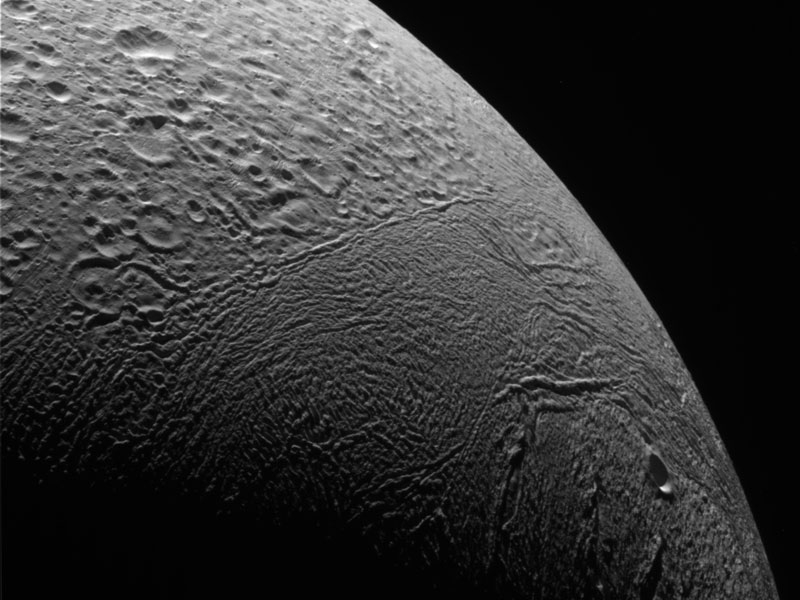Explanation: What does the surface of Saturn's ice-spewing moon Enceladus look like? To help find out, the robotic Cassini spacecraft now orbiting Saturn was sent soaring past the cryovolcanic moon and even right through one of Enceladus' ice plumes. Cassini closed to about 52 kilometers during its closest encounter to date. The above unprocessed image was taken looking down from the north, from about 30,000 kilometers away. Visible are at least two types of terrain. The first type of terrain has more craters than occur near Enceladus' South Pole. The other type of terrain has few craters but many ridges and grooves that may have been created by surface-shifting tectonic activity. Exogeologists are currently pouring over this and other Cassini images from last Wednesday's flyby to better understand the moon's patch-work surface, its unusual ice-geysers, and its potential to support life. Cassini is scheduled to fly by Enceladus at least nine more times, including an even closer pass of just 25 kilometers this coming October.
1999 2000 2001 2002 2003 2004 2005 2006 2007 2008 2009 2010 2011 2012 2013 2014 2015 2016 2017 2018 2019 2020 2021 2022 2023 2024 2025 |
Yanvar' Fevral' Mart Aprel' Mai Iyun' Iyul' Avgust Sentyabr' Oktyabr' Noyabr' Dekabr' |
NASA Web Site Statements, Warnings, and Disclaimers
NASA Official: Jay Norris. Specific rights apply.
A service of: LHEA at NASA / GSFC
& Michigan Tech. U.
|
Publikacii s klyuchevymi slovami:
Enceladus - Encelad
Publikacii so slovami: Enceladus - Encelad | |
Sm. takzhe:
Vse publikacii na tu zhe temu >> | |
